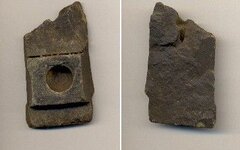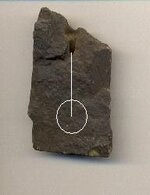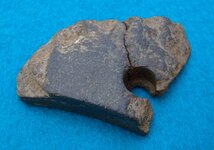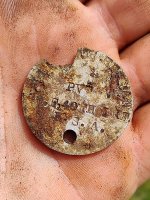DreamcatcherNC
Jr. Member
- Jul 22, 2008
- 98
- 1
Found this little thing in Duncombe Creek. Good example of how they made pipes. Neat little hole down to the bowl. I think he broke a corner off trying to shape the thing and chucked it into the creek.
Amazon Forum Fav 👍
Attachments
Upvote
0






